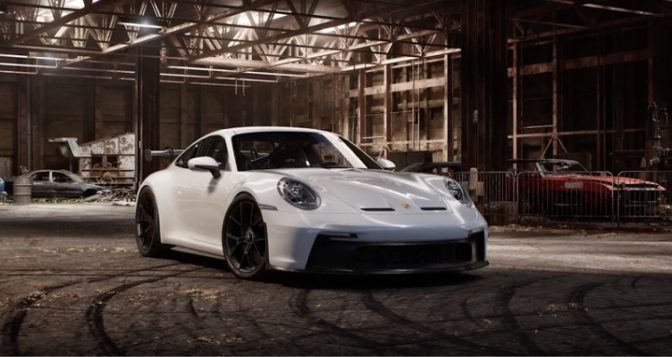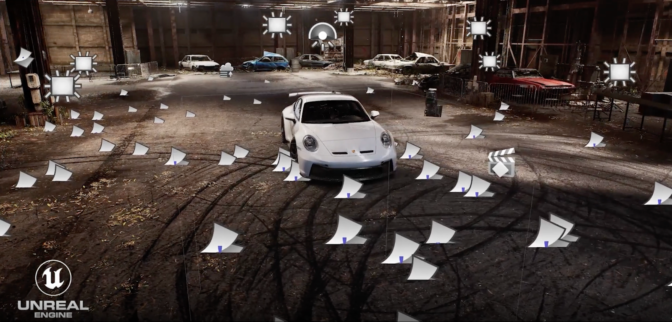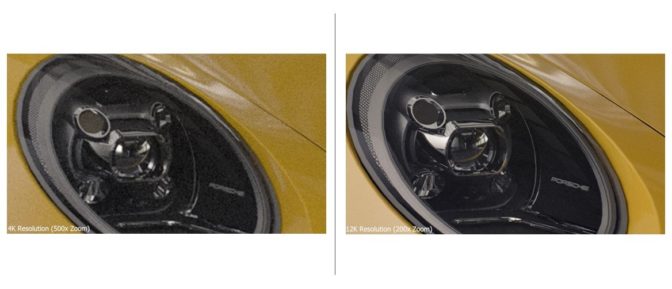Designing automotive visualizations can be incredibly time consuming. To make the renders look as realistic as possible, artists need to consider material textures, paints, realistic lighting and reflections, and more.
For 3D artist David Baylis, it’s important to include these details and still create high-resolution renders in a short amount of time. That’s why he uses the NVIDIA RTX A6000 GPU, which allows him to use features like real-time ray tracing so he can quickly get the highest-fidelity image.
The RTX A6000 also enables Baylis to handle massive amounts of data with 48GB of VRAM, which means more GPU memory. In computer graphics, the higher the resolution of the image, the more memory is used. And with the RTX A6000, Baylis can extract more data without worrying about memory limits slowing him down.
Bringing Realistic Details to Life With RTX
To create his automotive visualizations, Baylis starts with 3D modeling in Autodesk 3ds Max software. He’ll set up the scene and work on the car model before importing it to Unreal Engine, where he works on lighting and shading for the final render.
In Unreal Engine, Baylis can experiment with details such as different car paints to see what works best on the 3D model. Seeing all the changes in real time enables Baylis to iterate and experiment with design choices, so he can quickly achieve the look and feel he’s aiming for.
In one of his latest projects, Baylis created a scene with an astounding polycount of more than 50 million triangles. Using the RTX A6000, he could easily move around the scene to see the car from different angles. Even in path-traced mode, the A6000 allows Baylis to maintain high frame rates while switching from one angle to the next.
Rendering at a higher resolution is important to create photorealistic visuals. In the example below, Baylis shows a car model rendered at 4K resolution. But when zoomed in, the graphics start to appear blurry.
When the car is rendered at 12K resolution, the details on the car become sharper. By rendering at higher resolutions, the artist can include extra details to make the car look even more realistic. With the RTX A6000, Baylis said the 12K render took under 10 minutes to complete.
It’s not just the real-time ray tracing and path tracing that help Baylis enhance his designs. There’s another component he said he never thought would make an impact on creative workflows — GPU memory.
The RTX A6000 GPU is equipped with 48GB of VRAM, which allows Baylis to load incredibly high-resolution textures and high-polygon assets. The VRAM is especially helpful for automotive renders because the datasets behind them can be massive.
The large memory of the RTX A6000 allows him to easily manage the data.
“If we throw more polygons into the scene, or if we include more scanned assets, it tends to use a lot of VRAM, but the RTX A6000 can handle all of it,” explained Baylis. “It’s great not having to think about optimizing all those assets in the scene. Instead, we can just scan the data in, even if the assets are 8K, 16K or even 24K resolution.”
When Baylis rendered one still frame at 8K resolution, he saw it only took up 24GB of VRAM. So he pushed the resolution higher to 12K, using almost 35GB of VRAM — with plenty of headroom to spare.
“This is an important feature to highlight, because when people look at new GPUs, they immediately look at benchmarks and how fast it can render things,” said Baylis. “And it’s good if you can render graphics a minute or two faster, but if you really want to take projects to the finish line, you need more VRAM.”
Using NVLink, Baylis can bridge two NVIDIA RTX A6000 GPUs together to scale memory and performance. With one GPU, it takes just about a minute to render a path-traced image of the car. But using dual RTX A6000 GPUs with NVLink, it reduces the render time by almost half. NVLink also combines GPU memory, providing 96 GB VRAM total. This makes Baylis’ animation workflows much faster and easier to manage.
Check out more of Baylis’ work in the video below, and learn more about NVIDIA RTX. And join us at NVIDIA GTC, which takes place March 20-23, to learn more about the latest technologies shaping the future of design and visualization.



